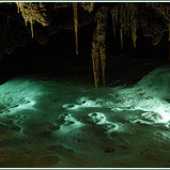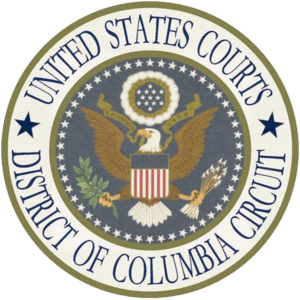Links for October 15, 2012
A shipment of radioactive kitchenware has been ordered out of Canada. nuclear-news.net
U.S. keeps importing fishery food from Japan after 3/11 Fukushima nuclear disaster. fukushima-diary.com
Cattle farmers in Fukushima Prefecture have resumed beef exports to the United States for the first time in 2 and a half years. www3.nhk.or.jp
NRC says that Catawba nuclear plant will get more scrutiny. charlotteobserver.com
Links or October 14, 2012
2.9 Bq measured in a grain of rice in Fukushima. fukushima-diary.com
A photographer says that “You can’t fix what’s happening in Fukushima.” enenews.com
An investigates finds contaminated groundwater in Colorado. bing.com
Lithuanians back opposition populists and reject nuclear plant plans. foxnews.com
Your dog is better behaved than my kid, you say?
After all, your dog is an animal, a pet, whose mentality likely won’t cross the level of a two-year-old human. So his limits, his willpower, his intelligence, his desires likely will never exceed that mentality, either. Controlling the behavior of such a creature—who will never need to be defiant to create a life for himself, since he has you to do that forever—should be quite an easy task, indeed.
In fact, if your bumper sticker didn’t say that—if it said that my kid was better behaved than your pooch—I’d call you a moron. Really? You can’t ensure the behavior of one loyal companion, an animal known to be easily controlled and taught—so easily, in fact, that it makes one of the best and most popular pets on earth? What is wrong with you, sir (or madam)?
Of course, this is not what you mean when you smugly point to the little sticker while your poor pooch pants from the back window of your car, waiting for the chance to go take a dump so he can finally get a treat. What YOU mean is that you think my kid should be as well behaved as a dog.
You think that my kid, who will have to think critically and find her own ways of living, of making ends meet, of settling disputes in ways other than A. barking or B. sniffing someone’s ass, should be as obedient as your pup. My child, who oozes intelligence and will get bored if told to “sit” for longer than a few moments, who YOUR future—whether through scientific innovation or simple social security taxes—depends upon, should not be testing limits, exploring the world, defining herself, and learning because her questions, loudness, energy, or personality BOTHER you, and you would much rather she sit, stay, and be a good kid.
You know what? Every dog is a good dog, and every kid is a good kid. It’s dingbats like you that I’m not sure about. And I bet if we polled your parents, we’ll find that you were oh so much fun—and oh so much less controlled than your pooch—when you were a tot as well. And you should thank your parents for that opportunity and stop comparing my kid to your dog. I don’t do that to you or your mother or your girlfriend, do I? Why the hell do you think it’s okay to do it with my child—or anyone else’s?
My two-tone hair gives me liberal cred
For years people assumed I was a conservative person because of the way I dress. They still do. I wear what I wear—plain black pants, single-colored t-shirts or blouses—because it’s cheap, and because I wear plus sizes that are often simply too difficult to find in stores. I can specially order things, but not only do they cost more—they also very rarely, if ever, fit right. Buying a bra for me is like getting a root canal.
So yeah, I’m a pretty liberal gal who dresses functionally. My makeup and jewelry stories are the same; I used to wear lots of earrings and glitter, black or red eyeliner, the works, and it was cute. But when my daughter came along, I didn’t have time for all of that crap while also working and attending school full time. I was also worried that she would hurt herself on some of my pointy bat-shaped jewelry and such. So I’m out of the habit of wearing makeup—not to mention the fact that I also became aware of its environmental and health impacts, which turn me off the stuff in general.But over the weekend, my husband dyed his hair black—something he does about once a year, since his hair grows so fast and it’s gone within months—and we decided to dye the tips of my red hair, both bangs and back, black as well. This two-toned hair thing is something I can really dig, since it only took a bit of effort and I don’t have to do anything to it every day. It was also super cheap.
Suddenly I have people who never would have smiled at me—who would even scowl at me, as if I were judging them by being present—saying hello, saying they like my hair, or simply smiling as they walk by. I’m talking about people with punk haircuts, lots of tattoos, and plenty of piercings. People who look like I might have once looked if I hadn’t had a child before graduating college. (I’m glad I had her, don’t get me wrong; I have simply never felt like I look the way I feel inside.)
So my two-tone hair apparently gives me some kind of liberal street cred, and I’m thinking of using that to connect with some local libs this election season. Why not? Maybe people will finally stop pegging me as a librarian or Hummel figurine collector and take me seriously as a progressive who’s pissed at the government and wants to do something about it.
Seek out plus-sized people
In my journey to try and love and accept myself the way I am—after hating my body and trying to change it for about twenty years—I have discovered that hating fat is something that’s been branded into my psyche. It’s not natural; any child will accept people no matter their size until they are conditioned, whether by adults or peers who have also been conditioned, to hate fat and fat people.
“Fat people are lazy” is one of the most common stereotypes you’ll hear. You’ll also hear that being fat means you smell, you are stupid, and that you are a drain on the economy. And above all else, it means you are unattractive. After buying this pack of crap for two decades, it’s taken some real effort to stop that line of thought and start to really accept people—accept myself—the way we are.One thing I’ve tried to do is to really seek out plus sizes—as well as all different sizes of people—in life. I will notice people I used to not meet eyes with and smile, or think about how nice someone is rather than looks. I have also started subscribing to blogs that feature full-figured fashion (simple, not runway stuff, but still nice) as well as doing things that all women do: fat moms breastfeeding, fat women working out or riding bicycles, whatever. The point is to normalize it and let the old thoughts pass while adopting new thoughts of acceptance and beauty.
It’s been difficult, especially with everyone from the media to family still insisting that your size dictates your worth and what you deserve. I still get repulsed by some images, the same way I get repulsed by my own reflection sometimes after a lifetime of people telling me I had such a pretty face, that I would be so much happier if I would just take these pills or that diet or stop eating—no matter that I walked every day and was a vegetarian. Of course, when I did do those things, I always got very sick—once, I even ended up in the hospital—but people never really gave a damn about that. They only cared about what the scale reflected.
It’s going to take some time to really love me as I am. Just today I was hating on myself after a particularly bad menstrual period day; in fact, said bad day is still happening right now. But if I work at it every day and provide my body with the love and gratitude that it’s deserved every day of my life, maybe I’ll get there.
France Depends on Nuclear Power
French scientists discovered natural radioactivity and explored its properties early in the history of nuclear science. France was involved in nuclear research prior to WW II and, following the war, the government created the Commissariat à l'Énergie Atomique to fund and guide research. In the 1950s, the emphasis was on nuclear weapons research but progress was made on civilian use and the first nuclear reactor in France started in 1963.
After the oil crisis in 1973, France’s Prime Minister, Pierre Messmer, announced the Messmer plan. With few energy resource of its own, France was going to start a massive nuclear power program with the goal of generating all of its electricity from nuclear power. The plan called for eighty nuclear power plants by 1985 and one hundred seventy plants by the year 2000. In actuality, fifty six reactors were built and put into operation by 1990.
Today, about eighty percent of France’s electrical energy is generated by nuclear reactors. The reactors generate around four hundred and twenty five terawatts. This makes France the most nuclear powered nation on Earth. France generated the lowest amount of carbon dioxide per unit of GDP of any nation on Earth and it also exports the most electricity to other nations.
France’s 59 reactors are managed by the Électricité de France (EDF) company which has eighty five percent in government hands. France’s reactors are not being used at full capacity all the time because of low demand. This is a problem because the costs of operation are relatively constant so the return over operating costs is lower than it could be. Another company, Avera, is owned mostly by the French government and acts something like the U.S. Department of Energy.
In 2006, the government asked Areva and EDF to build a next generation nuclear reactor to be known as the European Pressurized Reactor (EPR). EDF was hurt by the 2008 recession and is heavily in debt. The EPR project is plagued by cost overruns and delays with a current projection of 2016 for completion. EDF has said that if continued political and economic problems caused further cost overruns and delays for the EPR, the new type of reactor could be replaced by a cheaper and simpler French-Japanese design.
The Fukushima disaster in 2011 has reverberated throughout the world and all countries that utilize nuclear power to reevaluate the further use of nuclear power to generate electricity. France was no exception but after consideration, France is still going to continue its dependence on nuclear power. However, the head of the French nuclear safety agency said that France really needs to upgrade the safety and security features and procedures at all of its nuclear plants. This will, of course, result to an increase in the price of electricity.
When François Hollande was elected President of France in 2012, it became probable that there would be a partial phase out of nuclear power in France. His party is in favor of closing twenty four of the older reactors by the year 2025. With the uncertainty of politics in France, this could change at the next Presidential election, of course.
Great Seal of France:
Germany to Shut Down Nuclear Power
Germany currently has operational nuclear reactors at present. Nuclear power accounts for about twenty percent of Germany’s electricity. Following the disaster in March of 2011 at Fukushima, Japan, Chancellor Angela Merkel appointed a panel to look into the issue of shutting down Germany’s reactors. The previous government in Germany had announced that all German reactors would be shut down by 2012 but the Merkel government had extended the lifespan of German reactors by 12 years. In May of 2011, the Merkel government announced that all German reactors would be shut down by 2022.
Following the Fukushima disaster, seven of the oldest reactors were taken offline for examination. They will not be restarted. Another reactor that had been shut down temporarily due to technical problems will not be restarted. Six more will go offline in 2021 and the three newest will be shut down in 2022. The spent fuel disposal fund which collects almost two billion Euros a year will continue to collect fees.
The nuclear industry had argued that shutting down Germany’s reactors would cost many jobs and do great damage to Germany’s industrial base. The Merkel government had tried to extend the lifespan of the existing reactors as a “bridge” to the full implementation of green energy.
The Green Party in Germany was very anti-nuclear. Germany has invested heavily in renewable energy and some studies have suggested that renewable energy could supply all electricity world-wide by 2050. They have pointed out that the decision of Germany in 2000 to invest in renewable quadrupled its green energy output by 2010 and created three hundred and forty thousand jobs. New homes being build in Germany are outfitted with solar collector to supply electricity.
Supporters of the shutdown of the reactors point out that Germany will be able to cut its use of electricity up to ten percent by making buildings and machinery more efficient. Germany is currently an exporter of energy but critics of the shutdown say that it will wind up having to import energy for neighboring countries like France.
When the Merkel government announced the intentions to halt all use of nuclear power by 2022, concern about reducing CO2 to slow down climate change and heavy investment in renewable energy were also stressed as actions the government would take.
Wind power is touted as taking up the slack in energy generation when the reactors are shut down. The biggest wind farms being planned are sited for the North Sea, but most of the reactors are in the south part of the country. This will require a major change to the German power grid including a high-capacity trunk line to carry electricity from the north to the south. Protests are already building from people who don’t want an ugly system of cables and pylons running through the beautiful countryside of the center of the country. It looks like Germany will have a mess on its hands as technology, climate change, politics, and economics all battle it out over nuclear energy.
German national seal:
Radioactive Waste 19 - Court ruling against the NRC
In my previous post, I discussed recent rule changes at the Nuclear Regulatory Commission with respect to extending the time allowed from 30 years to 60 years for utilities to temporarily store spent nuclear fuel in pools or dry cask storage while a permanent geological repository is sited and developed. The new rules went into effect in January of 2011. In February of 2011 Connecticut, New York and Vermont sued the NRC to repeal the new rule for storage.
The lawsuit filed by the three north-eastern states claims that when the NRC made the rule changes it "acted arbitrarily, abused its discretion, and violated the National Environmental Policy Act, the Administrative Procedure Act, the Atomic Energy Act, the Commission's policies and regulations." The suit was filed on February 14th, 2011 in the United States Court of Appeals for the District of Columbia Circuit.
The suit said that the NRC must carry out site-by-site environmental impact statements before extending the storage rules. They are concerned about possible leaks that would threaten the groundwater and environment in their states. They also raised the issue of the cancellation of the Yucca Mountain Repository for permanent waste storage and the failure of the U.S. government to identify and begin development of another site for permanent spent fuel storage.
The attorney general of the state of Connecticut said “The NRC has a mandatory legal duty to provide state and local governments and public with a full and comprehensive analysis of the potential environmental impact of additional decades of storage of high-level nuclear waste.”
The NRC responded that their action was misrepresented by the lawsuit and that they were merely extending the storage period and not changing the rules to allow any plant to store spent nuclear fuel.
On March 11, 2011, New Jersey petitioned the Appeals Court to allow them to join the lawsuit filed by the other three states.
On June 8, 2012, the Appeals Court said that the NRC rule change was “major federal action necessitating either an environmental impact statement or finding of no significant environmental impact” as required by the National Environmental Policy Act of 1969.”
The NRC responded by agreeing to have its staff develop an environmental impact statement, revise the waste confidence finding and issue a new rule on temporary waste storage.
The attorney general of Connecticut said that “This action affirms the position Connecticut and other states have taken for years – that environmental impact needs to be assessed before any decision is made to allow longer storage of spent nuclear fuel at reactor sites. We look forward to working with the NRC in this process.”
Personally, I think that this is a good outcome. There are very real issues with the temporary storage of spent nuclear fuel that need to be addressed before the utility companies are allowed to double their temporary storage period. And the most pressing problem of all that has to be addressed as soon as possible by the U.S. government is the siting and development of permanent spent nuclear fuel storage.
Radioactive Waste 18 - Rule changes at the NRC
On January 24, 2011 a new rule was put in place by the Nuclear Regulatory Commission with respect to the storage of spent nuclear fuel. The new rule covered the storage of spent nuclear fuel in pools near the reactor, onsite in temporary storage casks or offsite in independent storage facilities. The NRC made changes in 1990 to the Waste Confidence rulemaking procedures to allow for the extension of temporary storage. The new Waste Confidence report included the following five findings.
- The Commission found that there is “reasonable assurance” that safe disposal of high-level radioactive waste and spent nuclear fuel in a geologic repository is technically feasible. While this may be true in theory, finding a safe repository site has turned out to be difficult to say the least.
- The Commission found that there is “reasonable assurance” that at least one such repository will be available in the United States by the year 2025 and that there will be sufficient capacity within thirty years beyond the licensed life of any operating reactor to accept all the waste generated by such reactors. Considering that the Yucca Mountain Repository was cancelled in 2010 and that it is estimated that it may take twenty years or more to site and develop a repository, it would appear that we are already behind schedule.
- The Commission found that there is “reasonable assurance” that safe temporary storage of nuclear waste and spent fuel will be carried out until the repository is available. We can only hope that this is true.
- The Commission found that there is “reasonable assurance” that until the repository is ready, waste and spent fuel can be stored safely for up to thirty years beyond the licensed life of thirty years for any reactor without adverse environmental impact. This means that the NRC feels that it is reasonable to allow temporary nuclear waste and spend fuel storage for up to sixty years.
- The Commission found that there is “reasonable assurance” that safe temporary onsite or offsite storage will be made available if needed. This better be true because it is estimated that at current levels of spent nuclear fuel generation, all the spent fuel pools in the United States reactors will be full by 2017.
In 1999, the NRC reviewed the findings from the Waste Confidence study of 1990 and concluded that experience with nuclear waste storage since 1990 had basically validated the 1990 findings. Therefore the NRC decided that it was not necessary to carry out a comprehensive reevaluation of its 1990 findings. It further stated that it would consider such a reevaluation after the current repository developments and regulatory activities had been completed. Or, of course, if there were serious unforeseen events at some time in the future. Well, the Yucca Mountain Repository has been cancelled and there was that disaster at Fukushima. The Unit 4 spent fuel pool at Fukushima is a threat to the whole world right now. Perhaps that reevaluation is now due.







